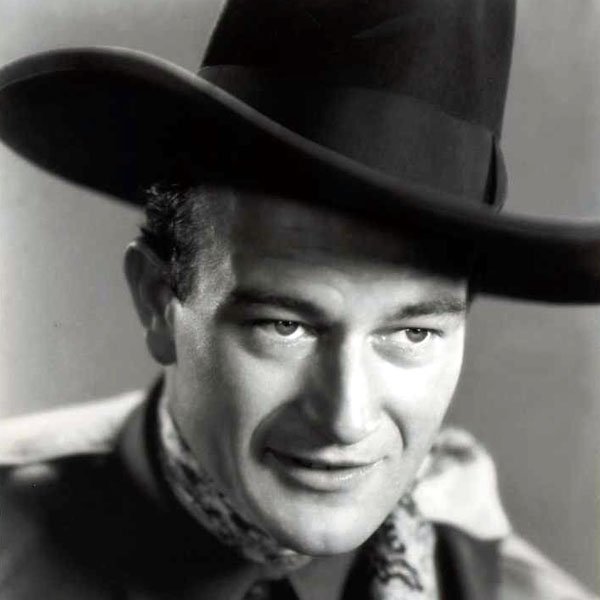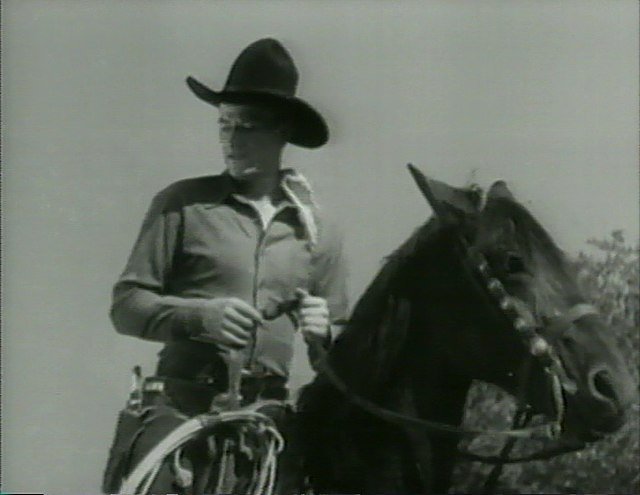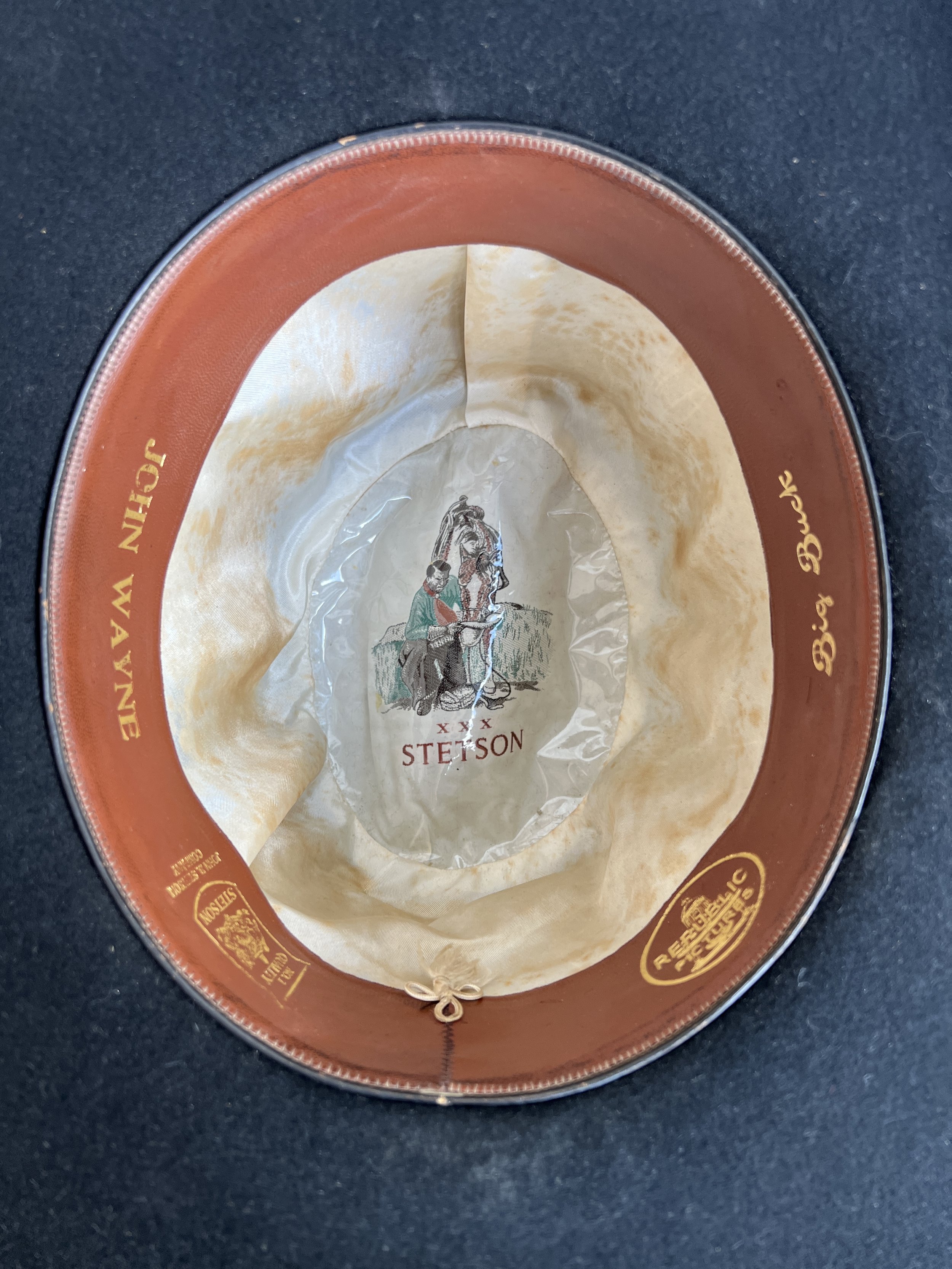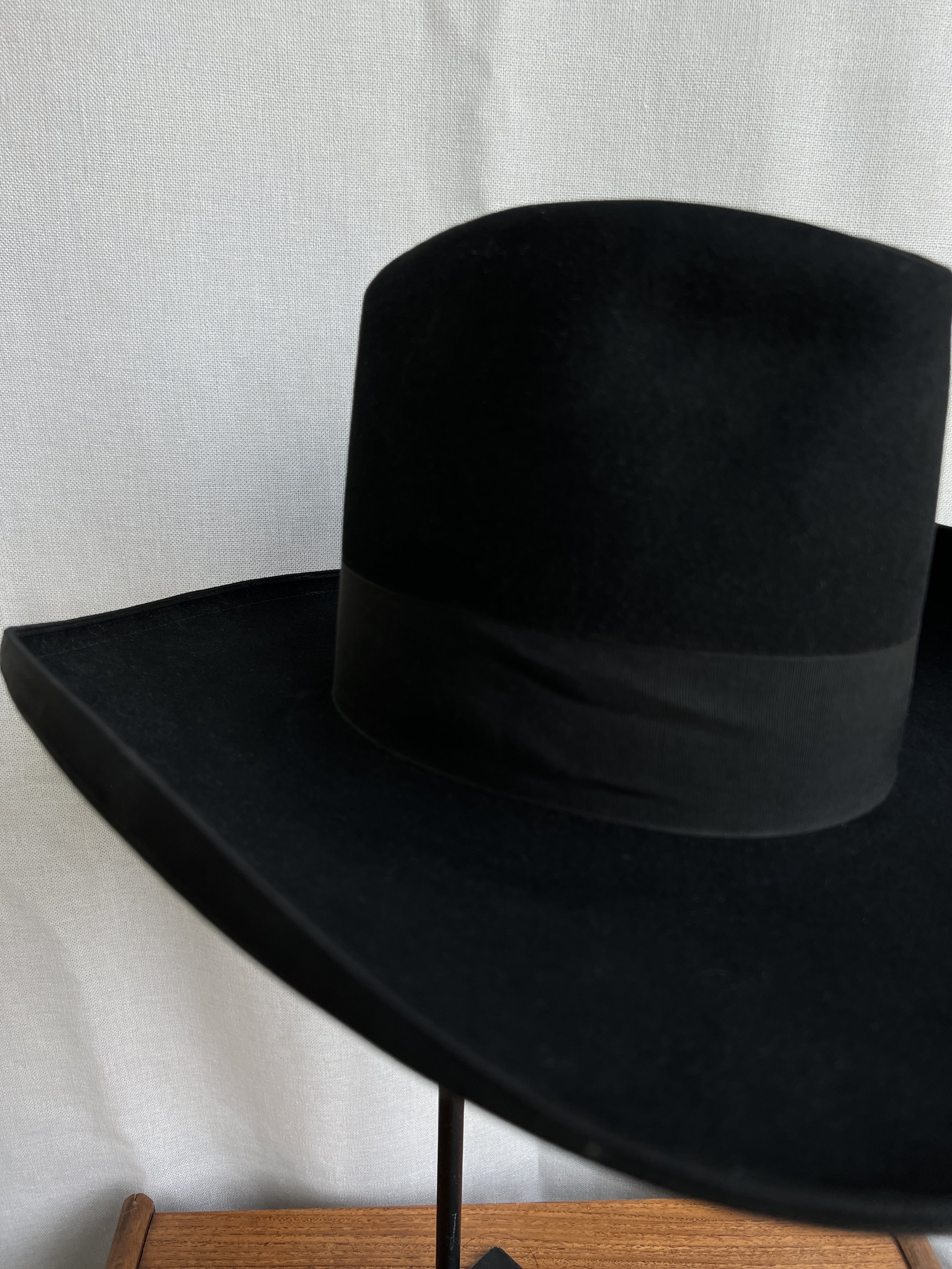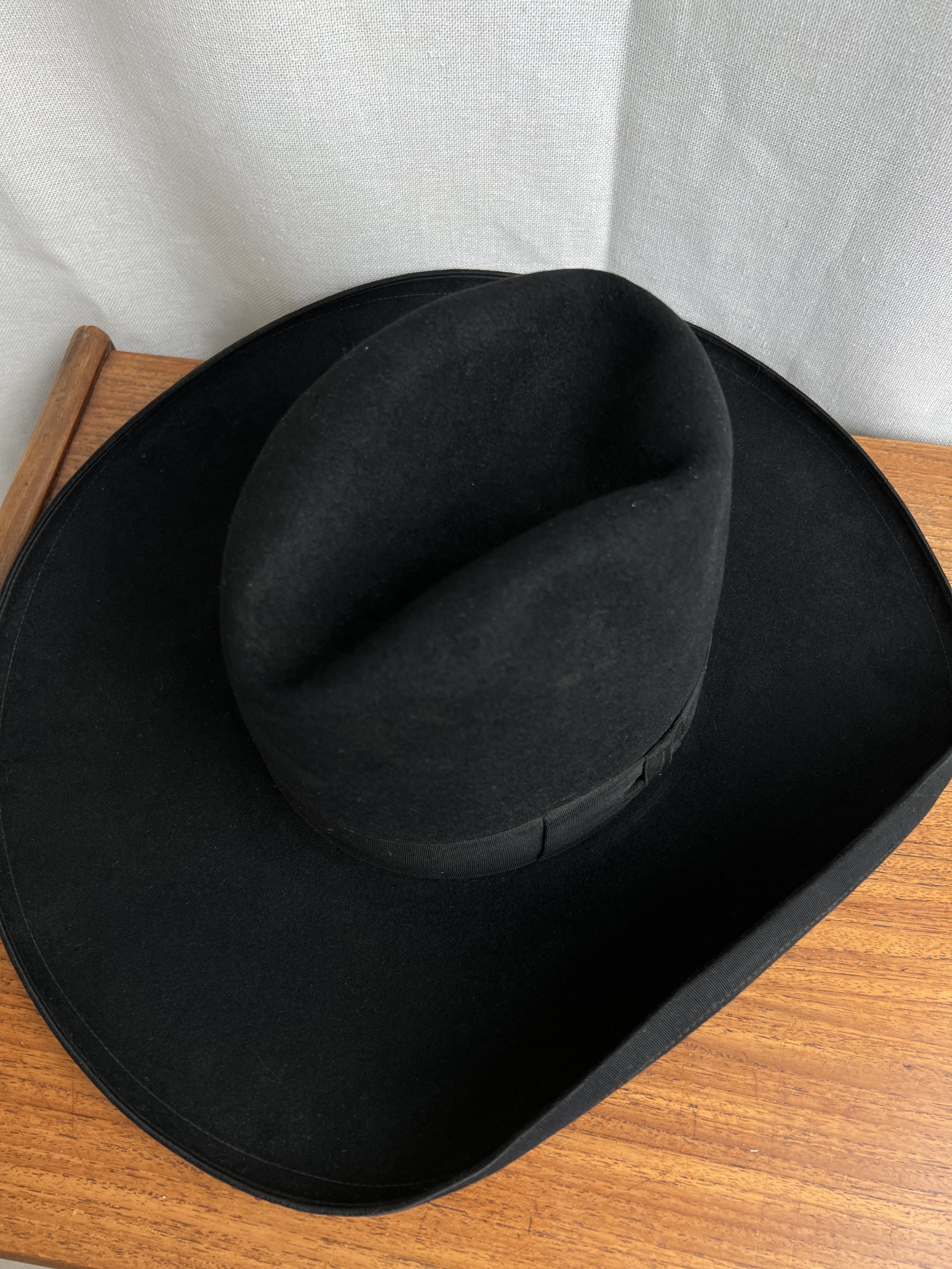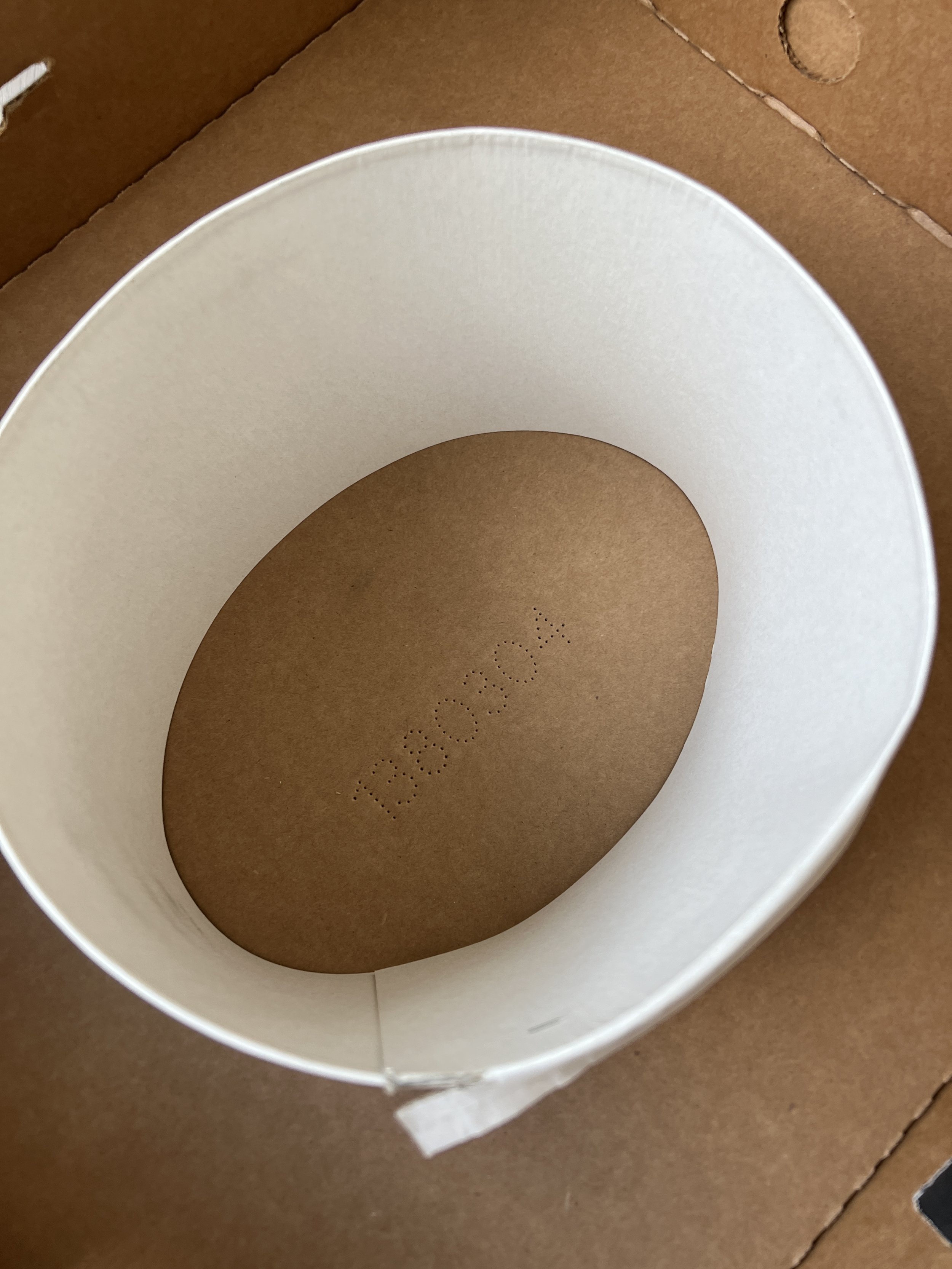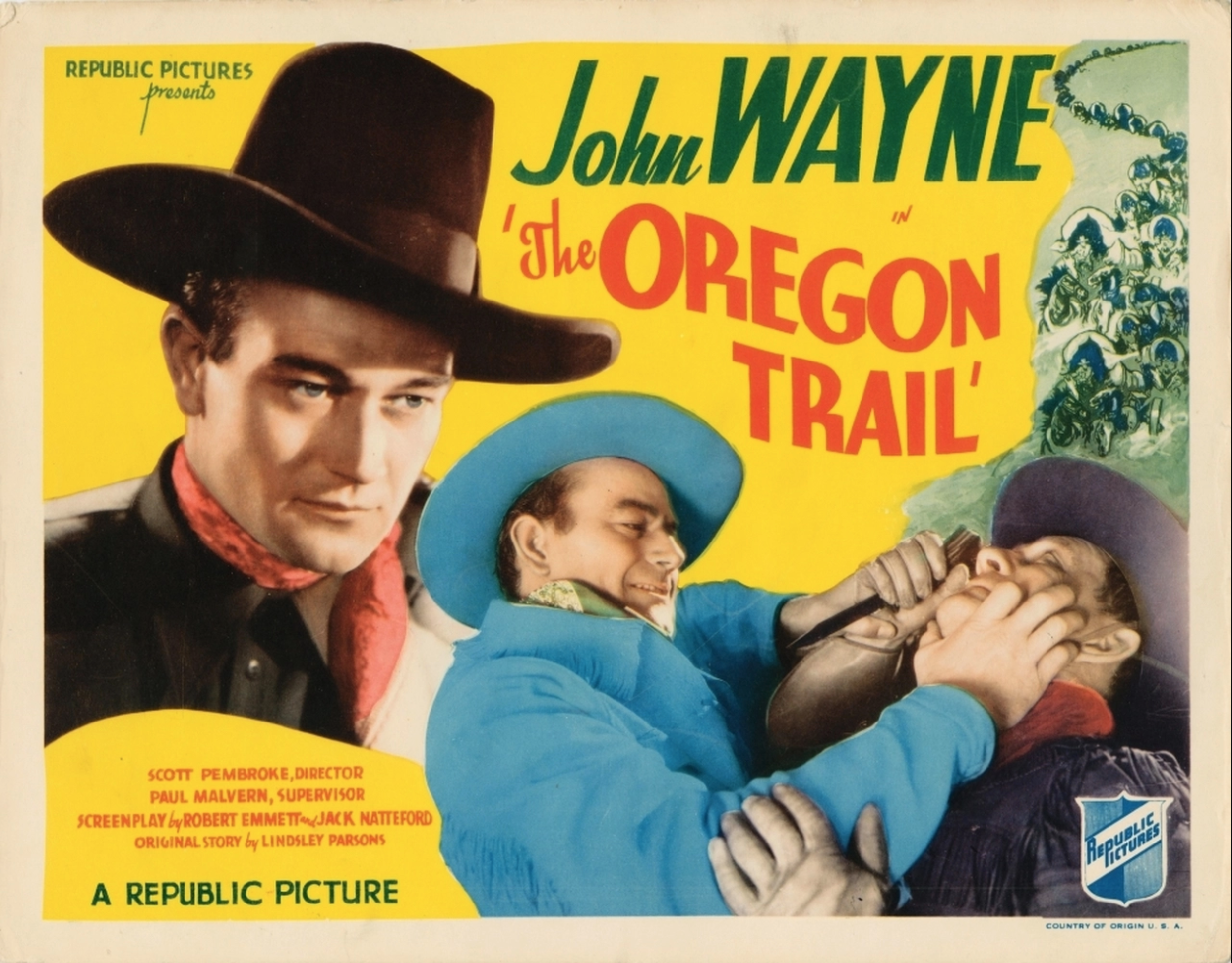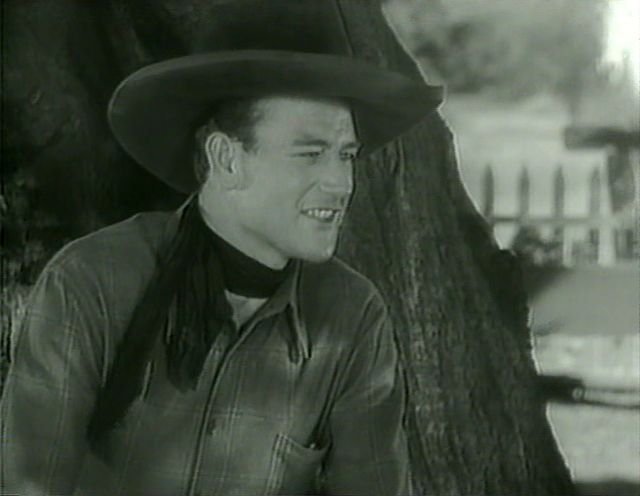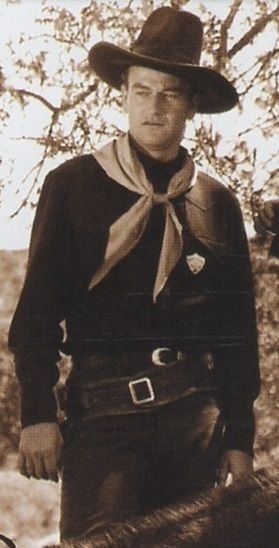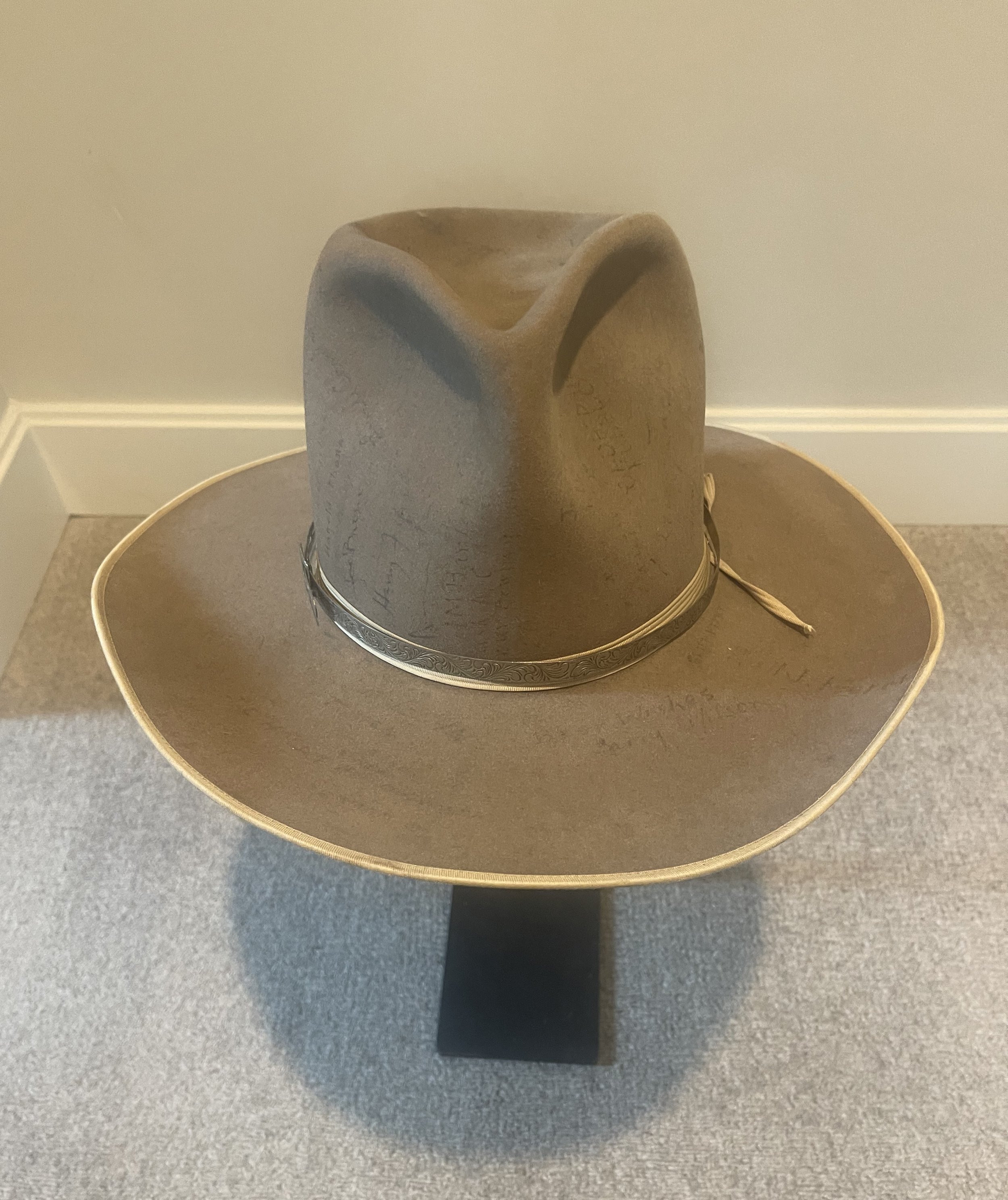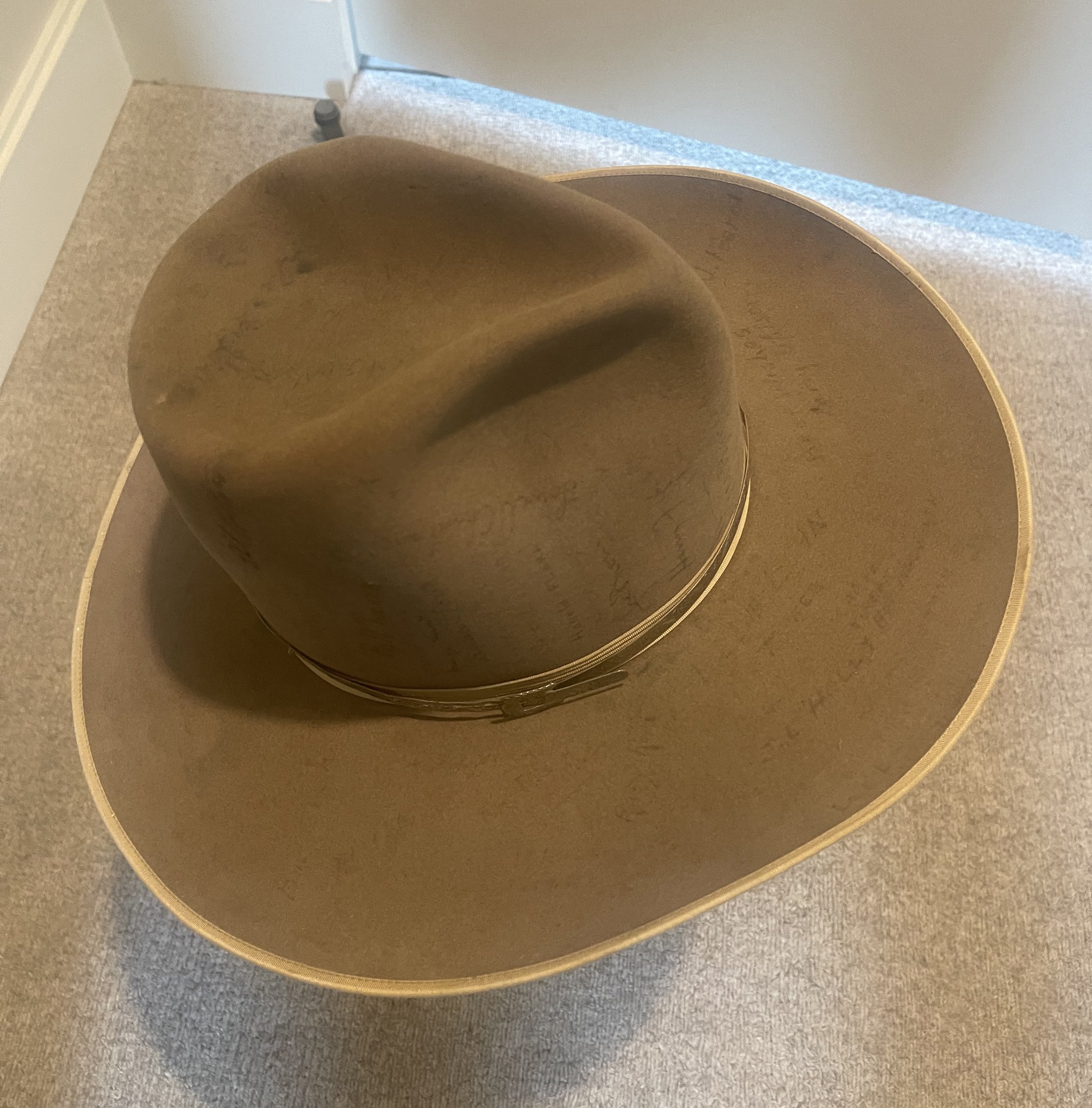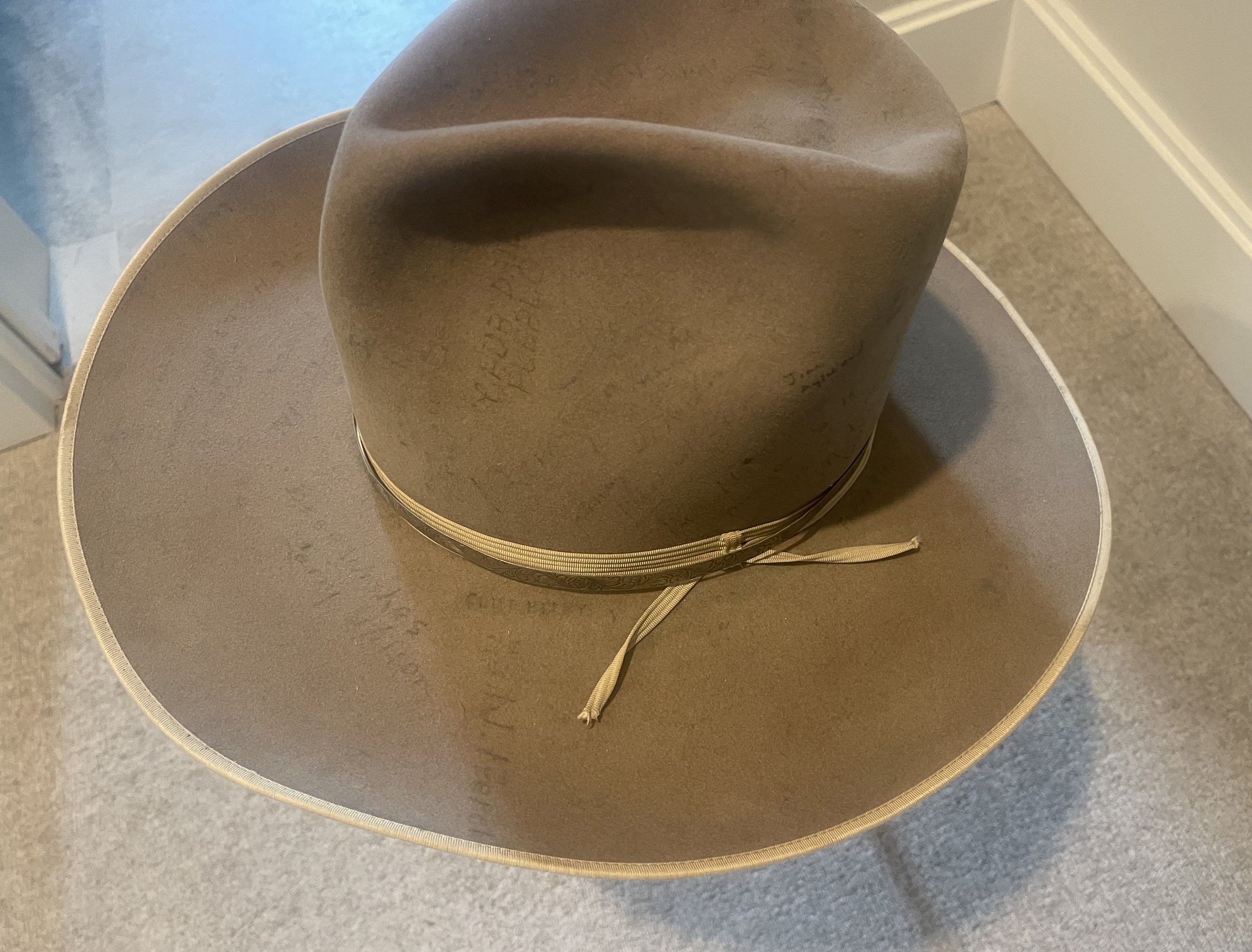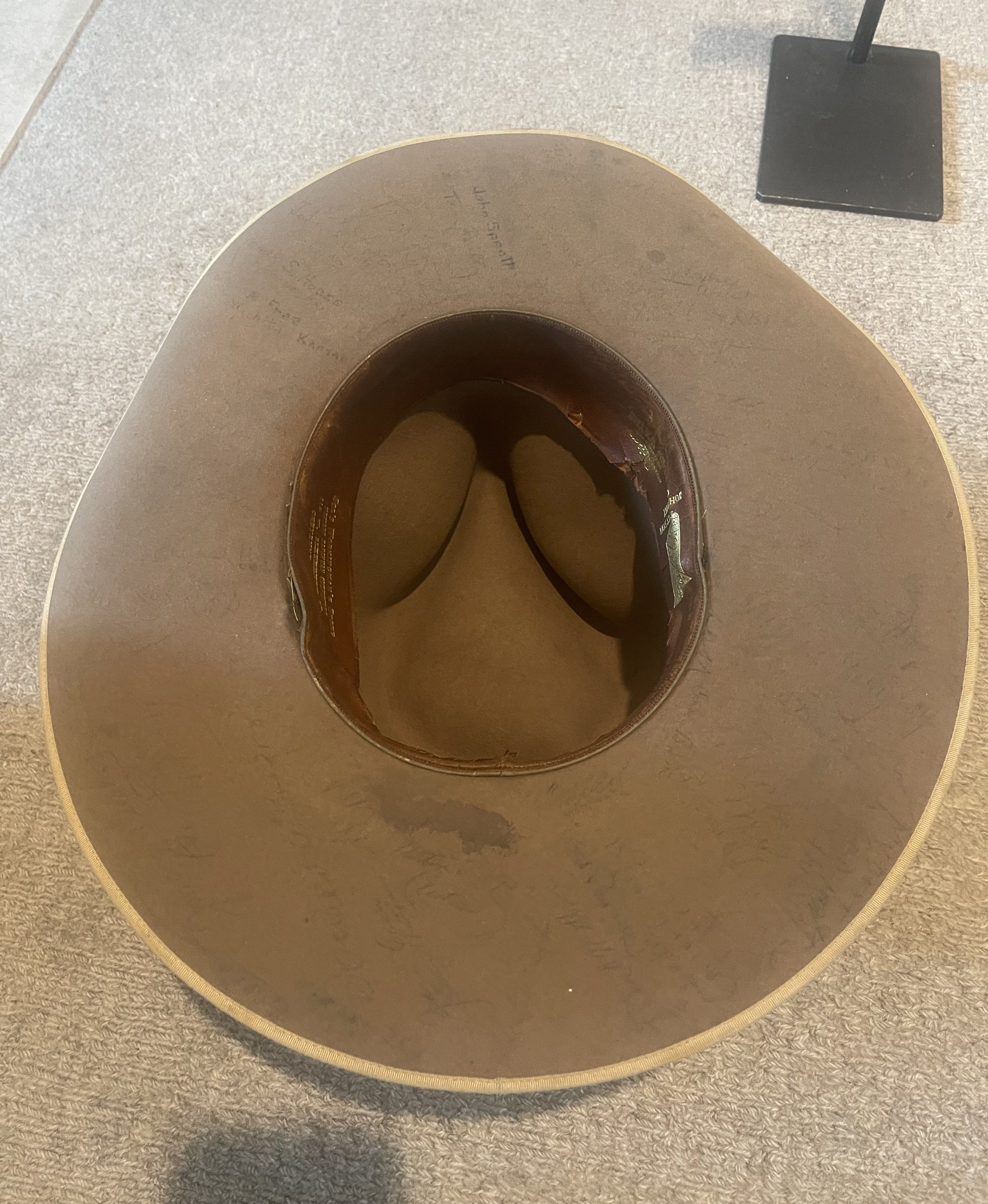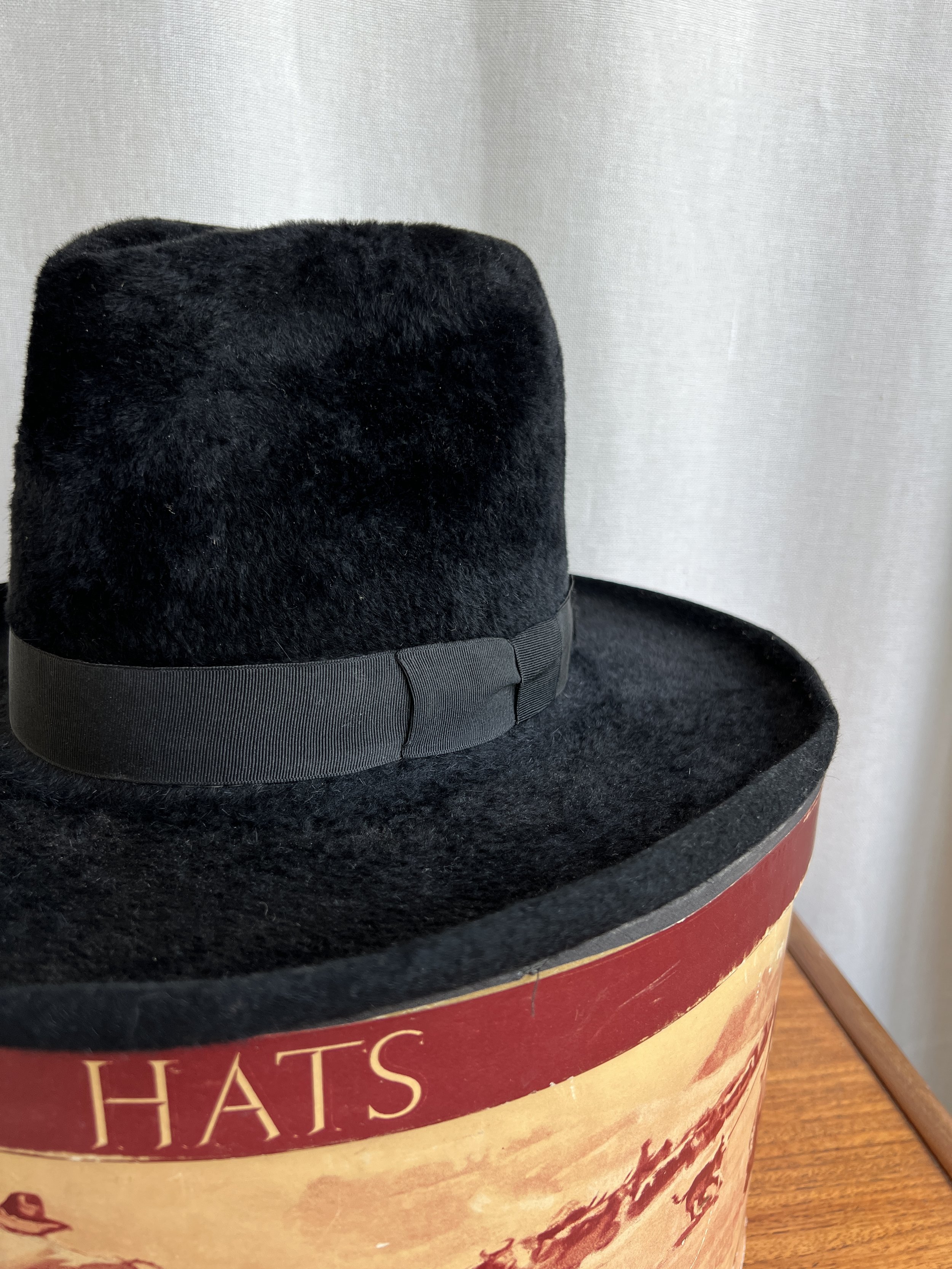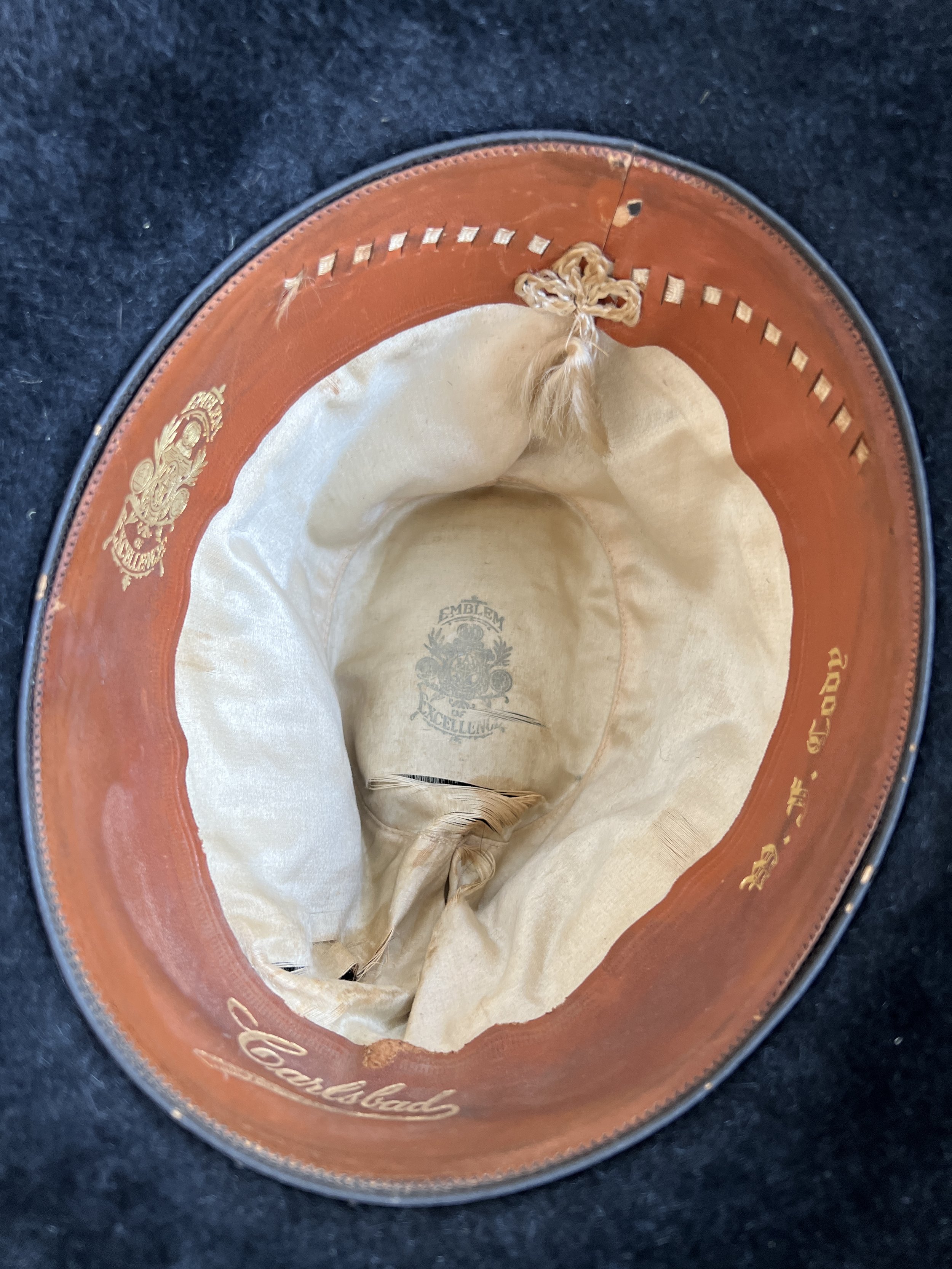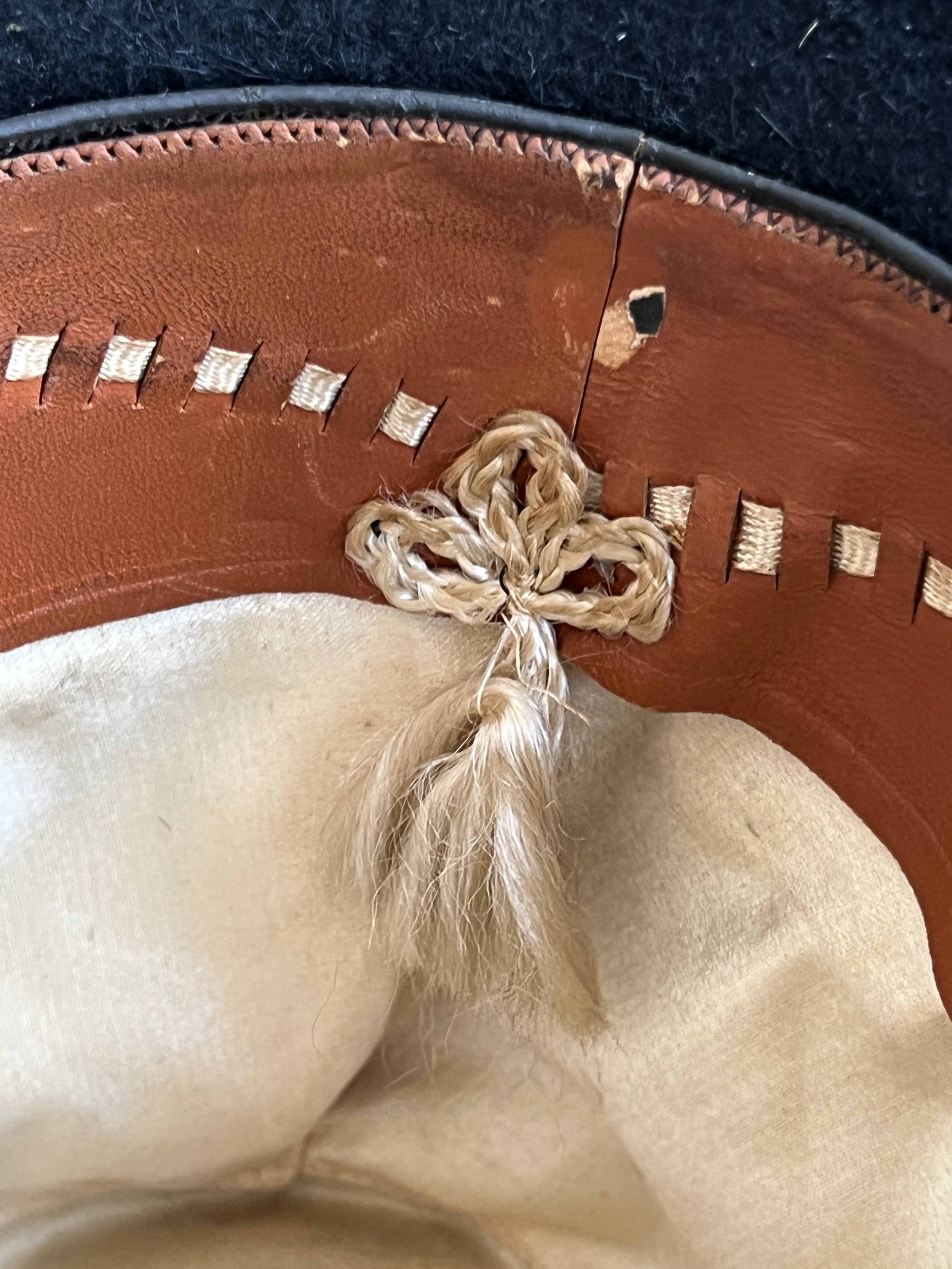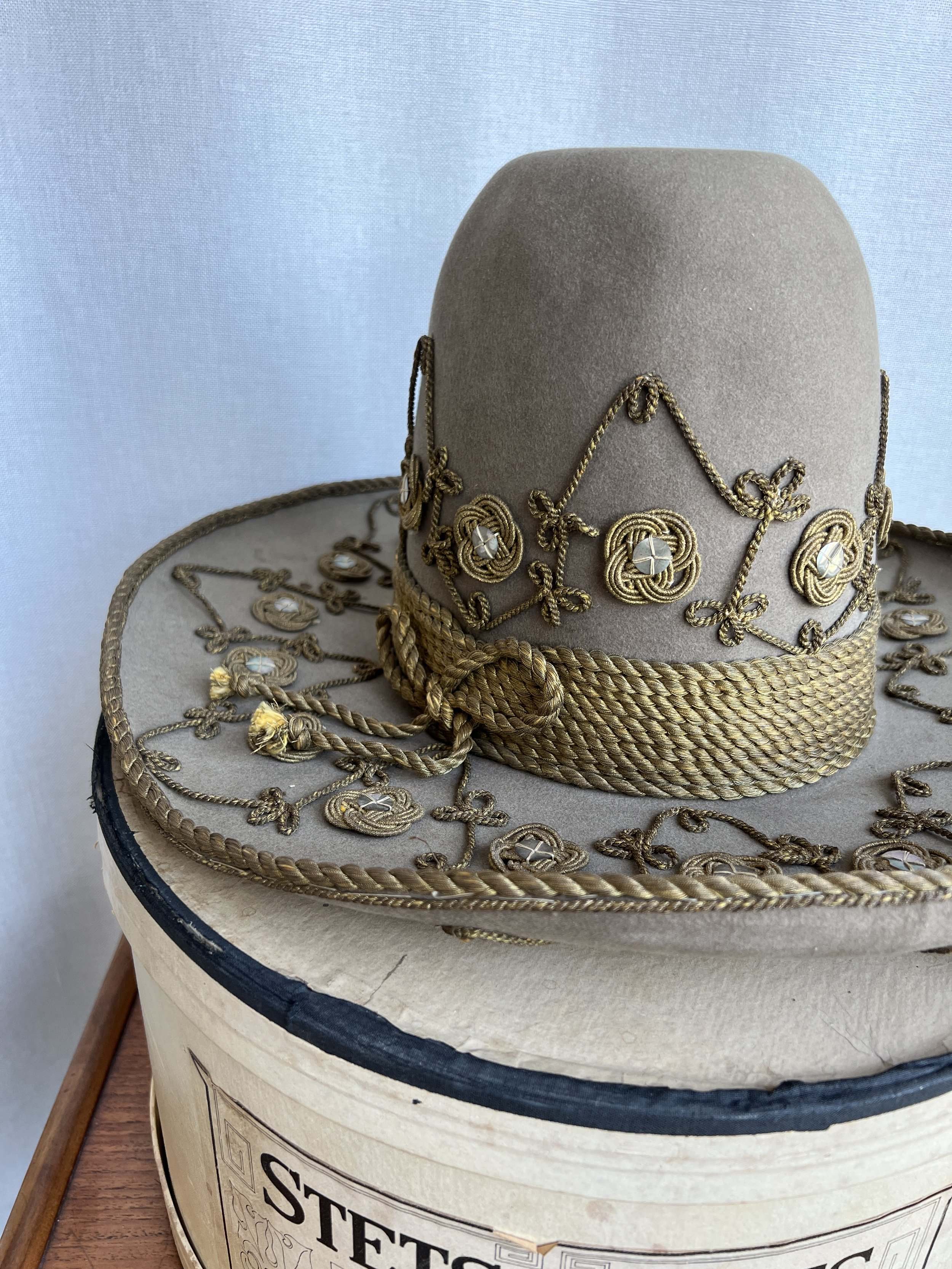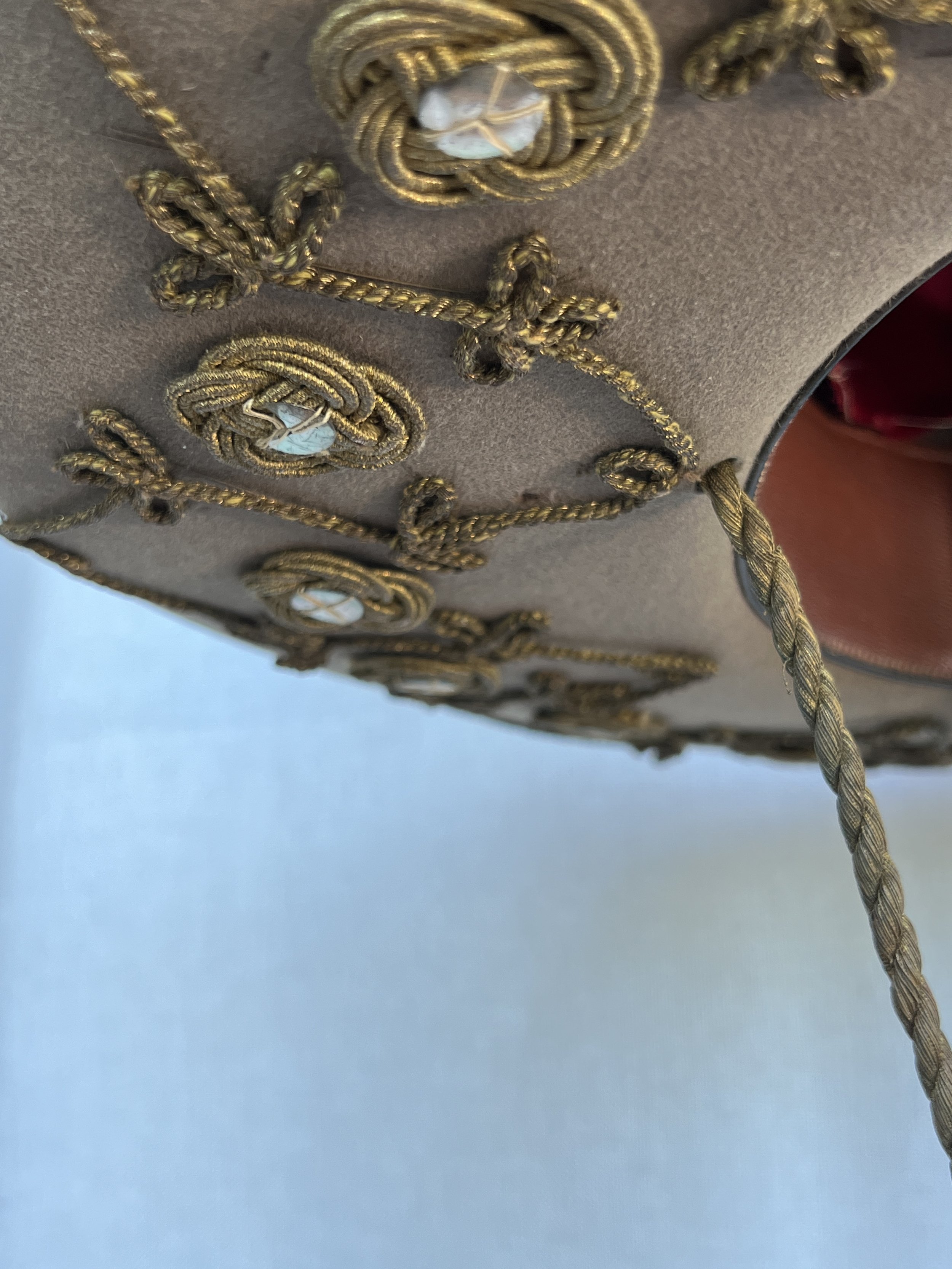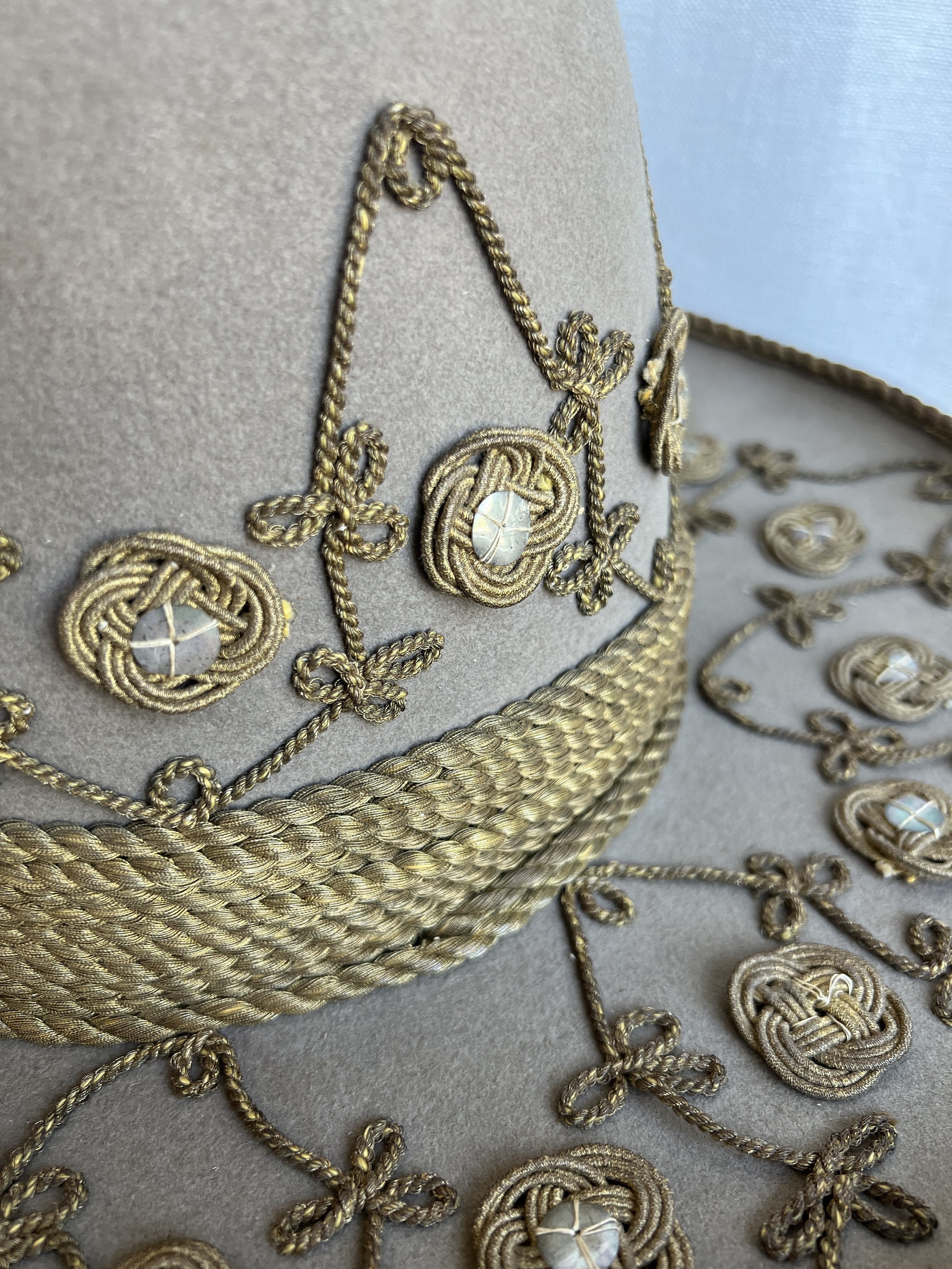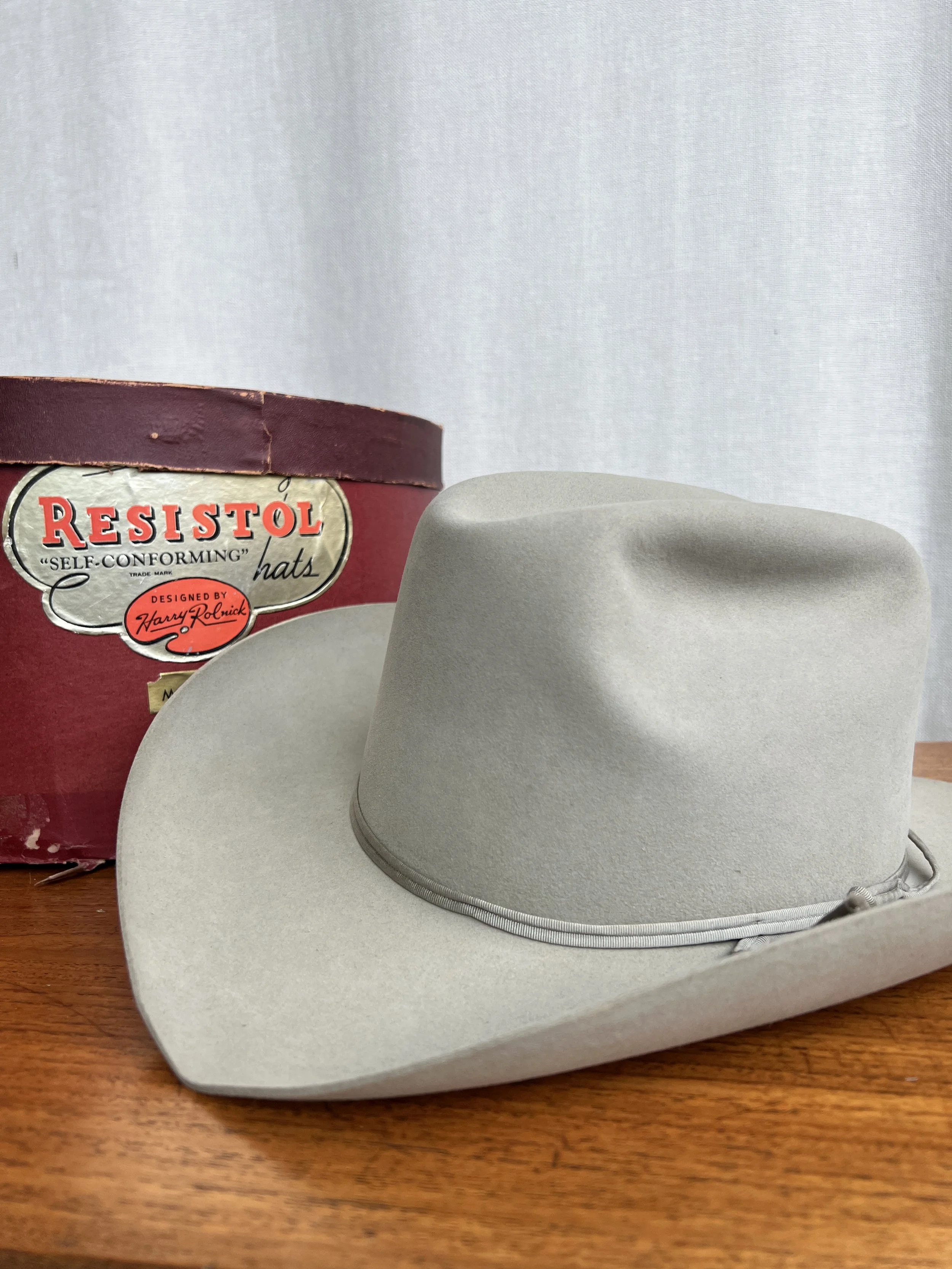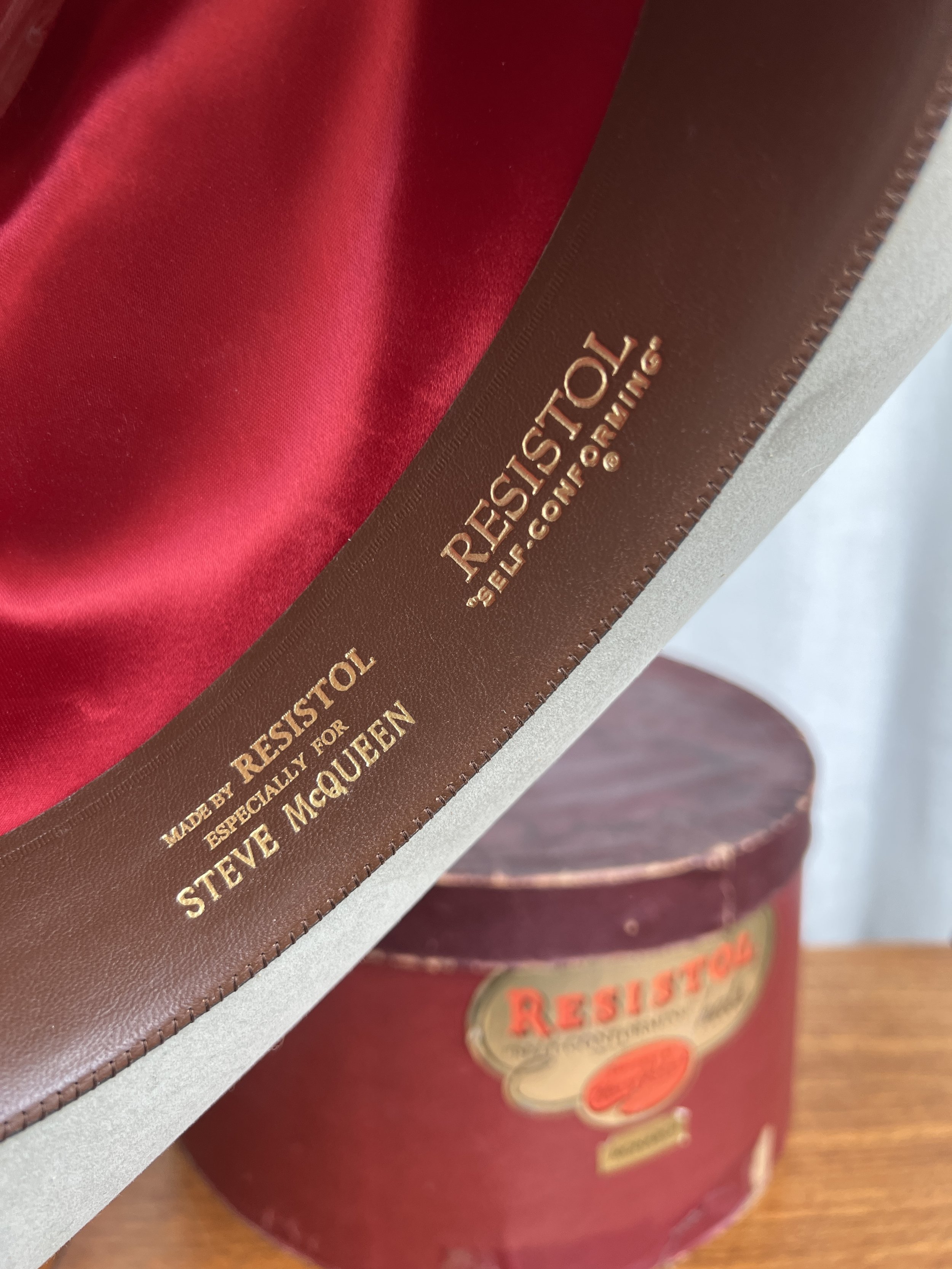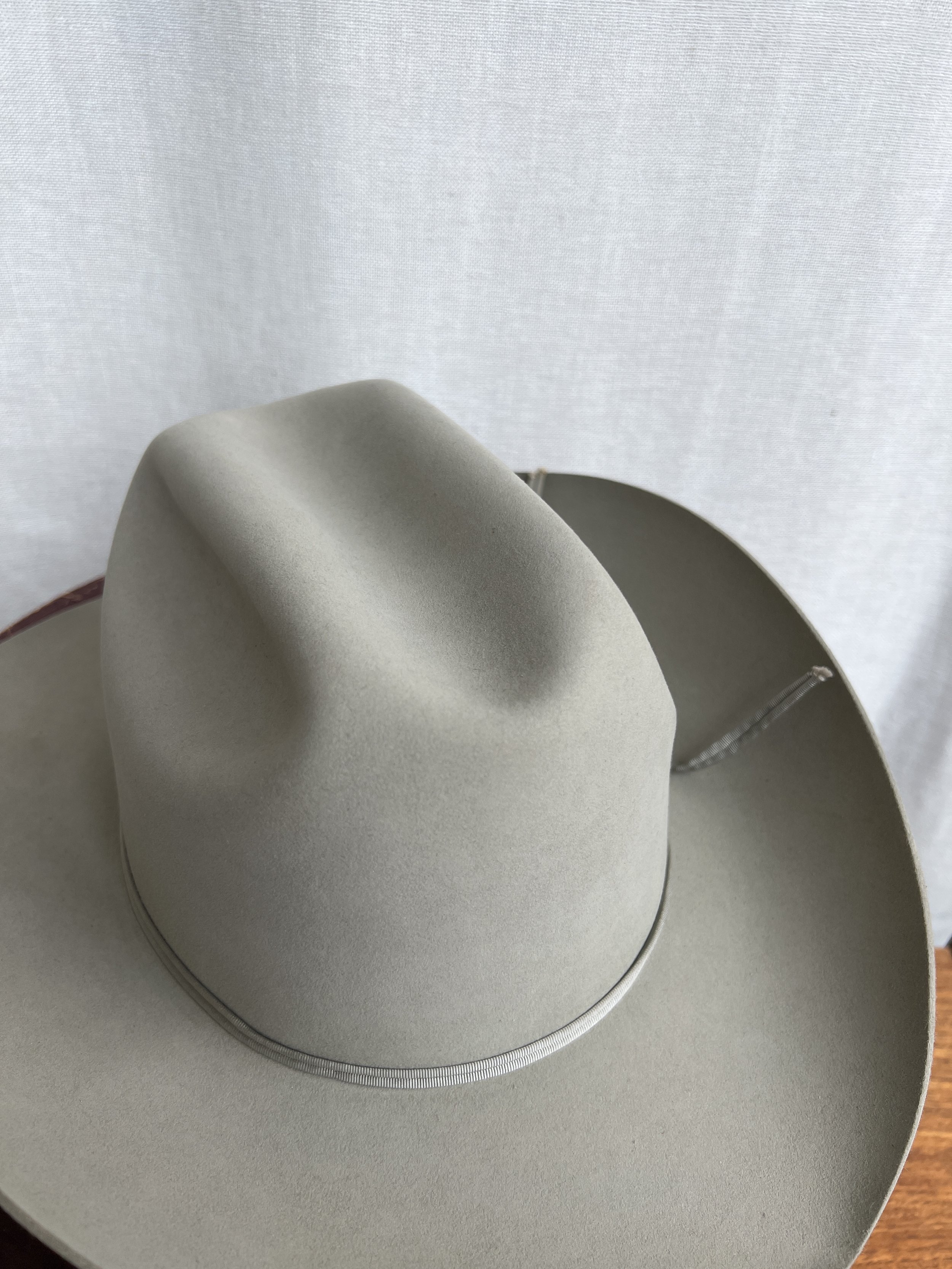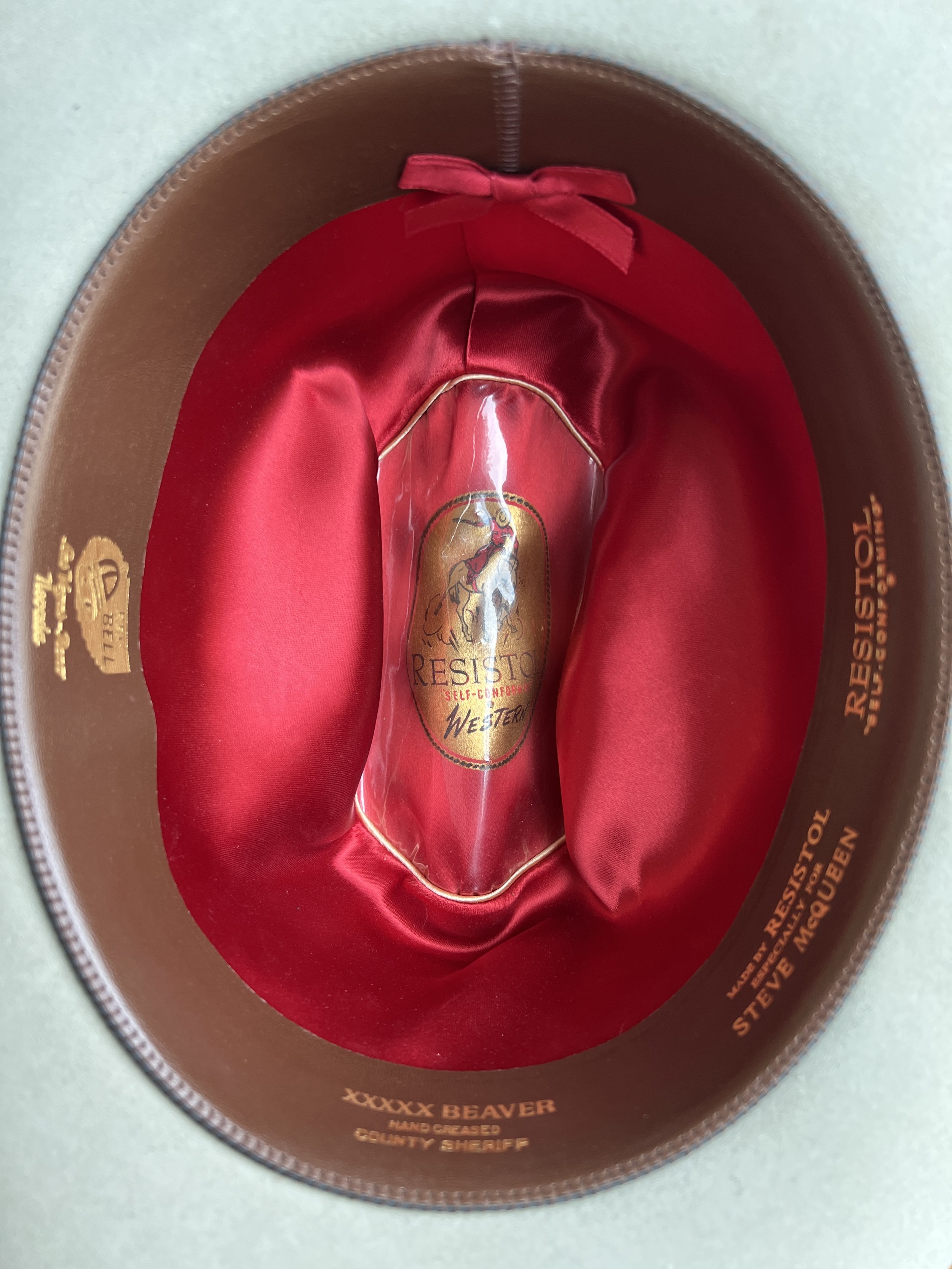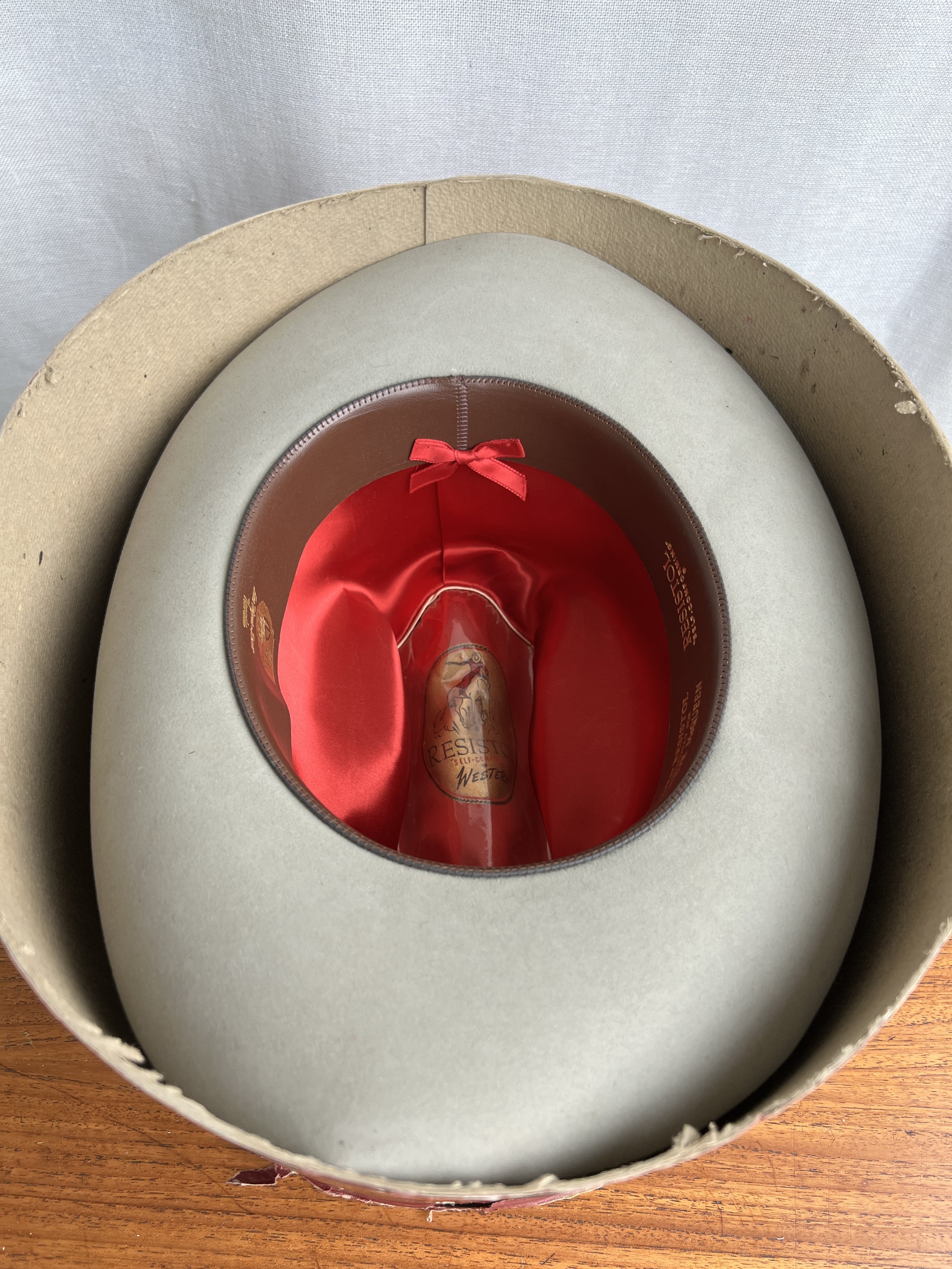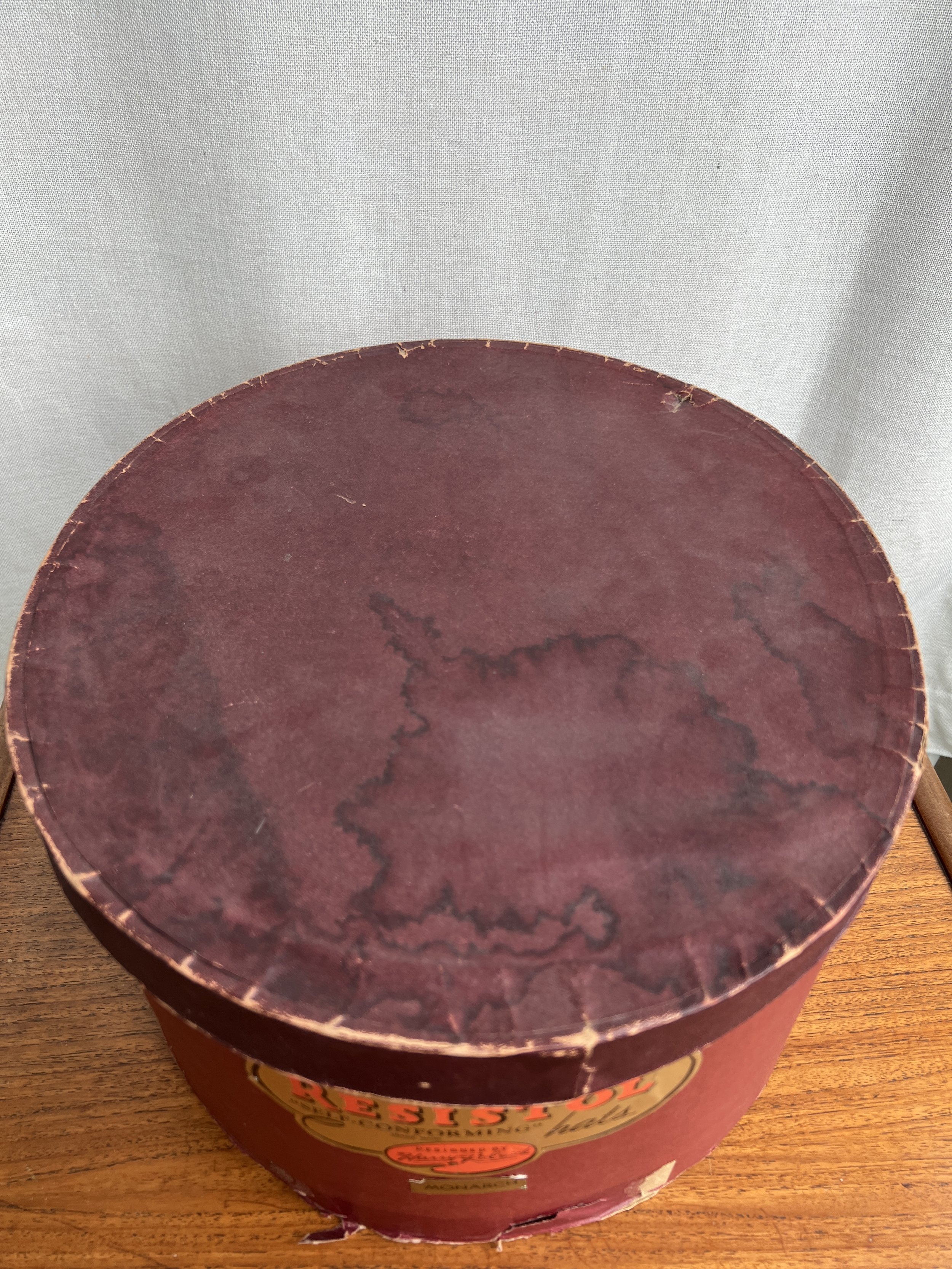➼ History & Context
Known as an eloquent speaker as both an actor and a politician, Ronald Reagan was also known for his charm and his Stetson. In fact, some of the most iconic imagery has him sporting his trademark headwear.
Ronald Reagan was the 40th president of the United States, serving two terms from 1981 to 1989, the governor of California from 1967 to 1975, and before that he served as the president of the Screen Actors’ Guild from 1947 to 1952.
Born in 1911 in Illinois, he grew up playing football, swimming, and acting in school theater. After attending Eureka College, Reagan became a radio announcer for several stations, and while traveling with the Chicago Cubs to Los Angeles, he did his first screen test, after which Warner Brothers signed him up for 7 years. He did B movies until 1937’s Love is On the Air, then larger features, including films like Dark Victory with Bette Davis and Humphrey Bogart, Brother Rat in 1938 in which he met his first wife Jane Wyman, and 1952’s Hellcats of the Navy with his second wife Nancy.
During WWII, Reagan’s poor eyesight kept him from service overseas, but he campaigned for war bonds and made 400 training films for the Air Force while stateside. After the war, he transitioned more to television rather than movies, and as host for the General Electric Theater he traveled round GE plants 16 weeks out of the year, doing up to 14 talks a day. Though rather a lot of talking, it raised his national profile considerably and brought him closer to realizing his political ambitions.
His relationships with both wives were positive and supportive throughout his life. He and Jane Wyman remained friends after their divorce in 1948, and he and Nancy were notoriously in love since they met in 1949. She used to say, "I don't know if it was exactly love at first sight, but it was pretty close" and he famously told her, "Whatever I treasure and enjoy ... all would be without meaning if I didn't have you." Nancy was extremely supportive of his political plans, and encouraged Reagan through several runs for political office.
Many know his record and acts as president and governor of California, but some may be less familiar with a few fun facts about his tenure, like that he was an FBI informant with the codename T-10 during the Red Scare while SAG president in the late 40s. Reagan also survived an assassination attempt in the first year of his presidency – and subsequently he and Nancy consulted the astrologer Joan Quigley on all types of decisions until the situation was outed by a disgruntled former chief of staff in 1988.
➼ Stetson Hats
Known as the “Hat of the West,” the Stetson is iconic and known round the world. John B. Stetson started his hat company in 1865 with just $100 for renting a small room and $10 worth of fur. The next year he designed the famous hat, called the “Boss of the Plains.” Now Stetson is known the world over for quality, durability, and style.
John Stetson grew up working in his father’s hattery until he left for the West. While out in Colorado, panning for gold and hunting with his friends, he created a large hat with a wide brim out of furs and hides he had collected and wore it for the entirety of their trip, enjoying its ability to keep the elements from him. According to legend, a traveling cowboy saw the hat, admired it, and bought it right then and there with a five dollar gold piece.
Returning to the east and settling in Philadelphia to start the John B. Stetson Hat Company, Stetson began with popular hat styles of the day, but quickly created the design for the “Boss” hat based on his West experiences, with a 4-inch crown and brim, a plain hatband to adjust to new sizes, and his new brand name on the inside of the band. Stetson also branched out into “dress” hats, differentiated by their shorter crown and narrower brim.
Felted fur hats are versatile and prized for their light weight and ability to maintain their shape and withstand weather. The wide brim guards the neck and shoulders, the high top keeps a pocket of air above your head as an insulating layer, and they can famously be used to carry water for yourself and your horse. Indeed, one of the first advertising illustration Stetson used was a cowboy using his hat to water his horse, an image still closely tied to the brand today.
A symbol of the West and a mark of a cowboy’s success in its expense, each hat becomes unique, shaped to the head of its cowboy through age, use, and intention with hot steam and careful curling. Texan cowboys developed a penchant for the 10-gallon model, though interestingly the term comes from the Spanish galón, meaning braid, referring to the number of braids used to make the hatband. Stetsons have been tied to many a legend of the West, including Annie Oakley, “Buffalo Bill,” Will Rogers, and Calamity Jane.
Movie cowboys became drawn to the Stetson hats as well, following in the footsteps of their real-world counterparts but adding their own twist – the larger and more flamboyantly shaped, the better.



















